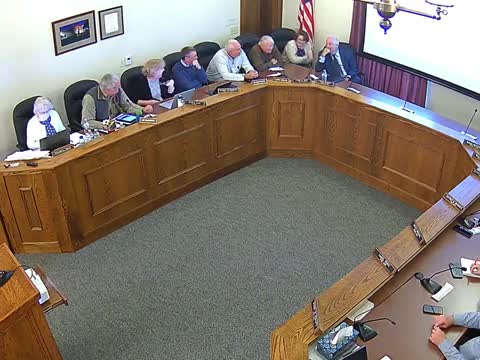City Council unveils ambitious community development plan
October 17, 2024 | Troy, Miami County, Ohio
This article was created by AI summarizing key points discussed. AI makes mistakes, so for full details and context, please refer to the video of the full meeting. Please report any errors so we can fix them. Report an error »

During a recent city council meeting, members gathered to discuss a comprehensive plan aimed at shaping the future of Troy. The meeting featured a presentation by consultants Austin Otter Miller and Matt O'Rourke from American StructurePoint, who outlined the project's objectives and the extensive public engagement that has informed its development.
The plan, initiated in August, emphasizes key areas such as economic development, attainable housing, and transportation. O'Rourke highlighted the importance of community input, noting that the project has seen significant participation, including 682 responses to an online survey and numerous attendees at public events. This engagement has been crucial in identifying community priorities, with downtown revitalization and housing options emerging as major themes.
A central component of the plan is the future land use map, which will guide zoning regulations and development strategies over the next 20 years. The map indicates areas designated for various types of development, including residential and light industrial zones, reflecting Troy's status as an employment center. O'Rourke emphasized that while the map provides a framework, it is not legally binding but serves as a guideline for future growth.
The presentation also introduced the concept of the \"close knit factor,\" which aims to ensure that new developments maintain the community's character and social fabric. This approach encourages developers to consider the broader impact of their projects on community cohesion.
As the meeting progressed, council members engaged in discussions about the plan's implications and the next steps in the zoning code development process. The council expressed enthusiasm for the community-driven approach and the potential for the plan to serve as a roadmap for Troy's future growth and development.
The plan, initiated in August, emphasizes key areas such as economic development, attainable housing, and transportation. O'Rourke highlighted the importance of community input, noting that the project has seen significant participation, including 682 responses to an online survey and numerous attendees at public events. This engagement has been crucial in identifying community priorities, with downtown revitalization and housing options emerging as major themes.
A central component of the plan is the future land use map, which will guide zoning regulations and development strategies over the next 20 years. The map indicates areas designated for various types of development, including residential and light industrial zones, reflecting Troy's status as an employment center. O'Rourke emphasized that while the map provides a framework, it is not legally binding but serves as a guideline for future growth.
The presentation also introduced the concept of the \"close knit factor,\" which aims to ensure that new developments maintain the community's character and social fabric. This approach encourages developers to consider the broader impact of their projects on community cohesion.
As the meeting progressed, council members engaged in discussions about the plan's implications and the next steps in the zoning code development process. The council expressed enthusiasm for the community-driven approach and the potential for the plan to serve as a roadmap for Troy's future growth and development.
View full meeting
This article is based on a recent meeting—watch the full video and explore the complete transcript for deeper insights into the discussion.
View full meeting
